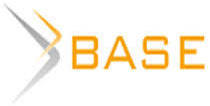Dual portrayal of numbers: algebraic and geometric models of world perception in humanitarian comprehension
The article deals with the issue of humanitarian understanding of mathematical results in the algebraic and geometric versions. Algebraic and geometric ways of perception of the world are fundamental ontological positions that represent different "faces" of a number. The language of modern mathematics requires a synthesis of geometric and algebraic approaches to express the expanding completeness of the numerical description of the world. The article discusses the processes of number visualization, which are examples of merging algebraic and geometric projections of a number. The productivity of merging geometric and algebraic in number is illustrated by a number of examples from the history of mathematics, considered in the humanitarian aspect. The ability to come to an abstract-algebraic solution through geometric contemplation determines the specifics of the multiplicity of numbers. A three-dimensional presentation of the shape of a number in the modern humanities can be considered as a kind of mathematical and humanitarian problem on the visual hermeneutics of the world. The key point in the humanitarian understanding of the number is the parallax of geometric and algebraic, which can lead to the ethical task of transforming the inner world of the numerator. The situation of division, opposition of the algebraic and geometric understanding of number is not fruitful. The need to synthesize these directions is illustrated by a number of examples from the history of mathematics. The article also presents a number of negative consequences that arise from the opposition of the geometric and algebraic faces of a number. Often the location of forces in the algebraic and geometric directions was a map of combat operations with one or another intermediate result. A special role in modern times was played by descriptive geometry, which offers its own versions of visual and abstract presentations of numbers. by the middle of the nineteenth century, mathematics was experiencing a certain confrontation between proponents of the algebraic and geometric approaches, representing a kind of Babel, where the mutual understanding of languages – geometric and algebraic – could provoke a collapse of the entire mathematical building. The way out of the hermeneutical crisis was the unification of algebraic and geometric resources, which made it possible to strengthen the humanitarian component of modern mathematics.

















While nobody left any comments to this publication.
You can be first.
Burbaki, N. (1963), Ocherki po istorii matematiki [Essays on the history of mathematics], Izdatelstvo inostrannoy literatury, Moscow, Russia (in Russ.).
Dmitriev, I. S. (1999), Neizvestny N'yuton. Siluet na fone epohi [Unknown Newton. A silhouette against the background of the era], Aleteya, S.-Peterburg, Russia (in Russ.).
Fang, Dzh. (1992), “Between philosophy and mathematics: their parallelism in parallax”, Voprosy istorii estestvoznaniya i tekhniki [Questions of the history of natural science and technology], 2, 187202 (in Russ.).
Florensky, P. A. (1995), Ikonostas [Iconostasis], Iskusstvo, Moscow, Russia (in Russ.).
Gasparov, B. M. (1996), Jazyk, pamyat', obraz. Lingvistika jazykovogo sushhestvovaniya [Language, memory, image. Linguistics of linguistic existence], Novoe literaturnoe obozrenie, Moscow, Russia (in Russ.).
Gauss, K. F. (1958), Izbrannye geodezicheskie sochineniya [Selected geodesic works], Izdatelstvo geodezicheskoy literatury Moscow, Russia (in Russ.).
Istoriya matematiki s drevneyshikh vremen do nachala XIX stoletiya: v 3 tomakh. T. 1. (1970), [History of mathematics from ancient times to the beginning of the XIX century: in 3 vols. Vol. 1], in Yushkevich, A. P. (ed.), Nauka, Moscow, Russia (in Russ.).
Klain, M. (1984), Matematika. Utrata opredelennosti [Math. Loss of certainty], Transl. by Yu. A. Danilov, Mir, Moscow, Russia (in Russ.).
Kolesnikov, S. A. (2014), Pravoslavnaya teologiya XX veka: praksis sozidaniya [Orthodox theology of the twentieth century: praxis of creation], BSU, Belgorod, Russia (in Russ.).
Kurant, R., Robbins, G. (2001), Chto takoe matematika? [What is mathematics?], Transl. by A. N. Kolmogorov (ed.), MCNMO, Moscow, Russia (in Russ.).
Livio, M. (2015), φ –сhislo Boga. Zolotoe sechenie – formula mirozdaniya [φ – the Golden Ratio: The Story of Phi, the World's Most Astonishing Number], AST, Prajm, Moscow, Russia (in Russ.).
Lobachevsky, N. I. (1956), Izbrannye trudy po geometrii [Selected works on geometry], AN USSR, Moscow, Russia (in Russ.).
Losev, A. F. (1963), Istoriya antichnoy estetiki: v 8 t. T. 1.:Ranniaya klassika [History of ancient aesthetics: in 8 vol. Vol. 1: Eearly classics], Vysshaya shkola, Moscow, Russia (in Russ.).
Losev, A. F. (1997), Khaos i struktura [Chaos and structure], Mysl', Moscow, Russia (in Russ.).
Ob osnovaniyakh geometrii: Sbornik klassicheskikh rabot po geometrii Lobachevskogo i razvitiyu eyo idey (1956) [On the foundations of geometry: Collection of classical works on Lobachevsky geometry and the development of its ideas], Gostekhizdat, Moscow, Russia (in Russ.).
Plato (1994), Sobranie sochineniy: v 4 t. T. 3 [Collected works: in 4 vol. Vol. 3], Mysl', Moscow, Russia (in Russ.).
Riman, B. (1948), Sochineniya [Works], Transl. by V. L. Goncharov, GITTL, Moscow, Russia (in Russ.).
Rota, G.-C. (1997), Indiscrete thoughts, Birkhauser, Boston.
Svasyan, K. A. (2002), Stanovlenie evropeiskoi nauki [The formation of European science], Evidentis, Moscow, Russia (in Russ.).
Uspensky, V. A. (2012), Apologiya matematiki: Sbornik statey [An apology for Mathematics: Collection of articles], Amfora, S.-Peterburg, Russia (in Russ.).